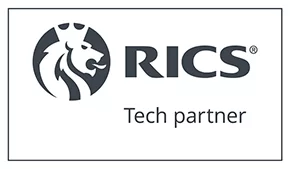Revenue recognition is essential for interpreting and reporting the financial vitality of a construction company. Let’s delve deep into how this fundamental accounting principle not only affects contractors’ cash flows but also influences their business decisions, tax liabilities, and income statements’ accuracy.
Understanding Revenue Recognition
Imagine a scenario where a contractor receives an advance payment for a project. Traditionally, you might think this cash inflow boosts their revenue instantaneously. However, the actual accounting of this transaction depends on the revenue recognition method employed. This process dictates that income should be tangibly recognised as the work is completed, offering a more accurate reflection of the company’s financial health.
Methods of Revenue Recognition
Percent Complete and Milestone Approaches
When a contractor and client agree on a fixed project scope and cost, the percent complete method often comes into play. This technique allows revenue recognition based on the percentage of the project completed at any given time. On the flip side, the milestone method acknowledges revenue at predefined project milestones, regardless of time or cost involved.
Complete Project and Time and Materials
For smaller contracts and unclear scopes, different approaches like complete project and time and materials are utilized. In the former, revenue is recognised only when the project wraps up, whereas the latter allows for ongoing revenue recognition as labor and materials are expended, sometimes subject to a cap to protect client interests.
Why Revenue Recognition is Important
In construction, complex projects and varying contract terms can make financial management challenging. Effective revenue recognition practices give contractors a transparent overview of their financial health, enabling better strategic and operational decisions.
Impact on Business Strategies and Outcomes
Adhering to recognised revenue guidelines, estimators can forecast more accurately, adjusting project strategies in response to real-time financial insights. This can drastically influence contract structuring, from choosing the optimal contracting method to deciding when to recognize profits for enhancing cash flow and maintaining competitive margins.
Types of Contracts in Construction
Understanding the different types of contracts can also influence how revenue is recognised. Here are some common contract types:
Fixed-Price Contracts
These contracts specify a set fee for the project, regardless of the actual time and costs incurred. Revenue recognition can follow the percent complete or milestone method, depending on the agreement.
Cost-Plus Contracts
Cost-plus contracts reimburse contractors for all legitimate project costs, plus a set percentage or fixed fee. This method often uses time and materials for revenue recognition.
Unit-Price Contracts
Unit-price contracts pay contractors a predetermined rate per unit of work completed. This can be advantageous for projects with uncertain quantities.
Incentive Contracts
Incentive contracts reward contractors for exceeding project goals, such as completing the project ahead of schedule or under budget. Revenue recognition can include bonuses based on performance milestones.
Challenges in Revenue Recognition
Change Orders
Change orders, common in construction projects, can complicate revenue recognition. Adjusting for additional work or modifications requires careful accounting to ensure revenue is accurately reflected.
Dispute Resolution
Disputes over project scope, quality, or payment terms can delay revenue recognition. Contractors need robust systems to manage and resolve disputes efficiently.
Long-Term Contracts
Long-term contracts spanning several years pose unique challenges. Revenue recognition must account for project progress, cost variations, and potential risks over extended periods.
Best Practices for Revenue Recognition
Detailed Contract Documentation
Ensure all contracts are thoroughly documented, specifying terms for revenue recognition, milestones, and change orders.
Regular Progress Reviews
Conduct regular project reviews to assess progress and update revenue recognition accordingly. This helps maintain accurate financial records and forecasts.
Collaboration with Financial Experts
Work closely with accountants and financial advisors to implement best practices and ensure compliance with revenue recognition standards.
Utilising Technology
Leverage construction management software to track project progress, costs, and revenue recognition in real time. This enhances accuracy and transparency.
The Role of Technology in Revenue Recognition
Construction Management Software
Modern construction management software can automate many aspects of revenue recognition. These tools provide real-time data on project progress, costs, and milestones, ensuring accurate and timely revenue recognition.
Integrated Financial Systems
Integrating financial systems with project management tools ensures seamless data flow between departments. This reduces errors and enhances the accuracy of financial reporting.
Revenue Recognition and Tax Implications
Tax Liabilities
Revenue recognition impacts tax liabilities, influencing when income is reported and taxes are paid. Proper timing can optimise tax obligations and improve cash flow management.
Deferred Tax Assets and Liabilities
Deferred tax assets and liabilities arise from timing differences between revenue recognition and tax reporting. Managing these effectively can provide financial benefits and enhance strategic planning.
Revenue Recognition and Financial Health
Accurate Financial Statements
Accurate revenue recognition ensures financial statements reflect the true economic reality of a construction company. This enhances transparency and trust with stakeholders, including investors and creditors.
Borrowing Capacity
Lenders and bonding companies assess a construction company’s financial health based on its financial statements. Accurate revenue recognition can improve borrowing capacity and access to capital.
Conclusion
Effective revenue recognition is more than an accounting necessity; it’s a strategic enabler in construction finance. By comprehensively understanding and applying the correct revenue recognition methods, construction firms can enhance their financial stability, ensuring that each financial statement accurately reflects their economic reality, thus paving the way for informed managerial decisions and sustainable business growth.
FAQs
1. What is revenue recognition?
It’s an accounting principle determining the right time and method to recognize revenue on the financial statements.
2. Which method matches revenue recognition with the completion of physical work?
The percent complete method matches revenue with the extent of work completed over a project’s lifetime.
3. Can revenue recognition impact a construction company’s borrowing capacity?
Yes, accurate revenue recognition affects financial statements, impacting lending and bonding capacities.
4. How does revenue recognition influence contract strategy?
It allows estimators to set realistic milestones and adjust project delivery strategies, ensuring financial alignment with project progress.
5. What are the challenges of revenue recognition in long-term contracts?
Long-term contracts require accounting for project progress, cost variations, and potential risks over extended periods.
6. How do change orders affect revenue recognition?
Change orders require careful accounting to adjust for additional work or modifications, ensuring revenue is accurately reflected.
7. Why is collaboration with financial experts important in revenue recognition?
Financial experts help implement best practices and ensure compliance with revenue recognition standards.
8. How can technology improve revenue recognition in construction?
Construction management software and integrated financial systems enhance accuracy and transparency in revenue recognition.











